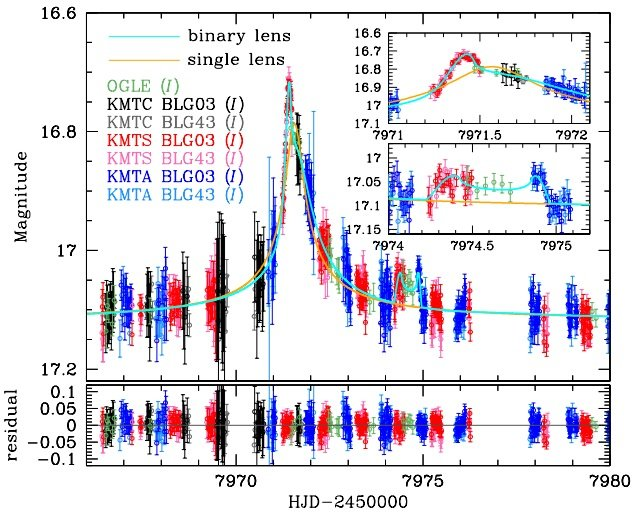Scientists have discovered a planet a lot like Jupiter orbiting a dim star, if you can even call it a star – it’s nothing like our Sun. The finding once again makes us wonder: What is a planet, anyway?
Artist’s concept of a brown dwarf. Illustration: Chuck Carter and Gregg Hallinan/Caltech (NASA JPL)
A team of researchers from two collaborations, KMTNet and the OGLE, or Optical Gravitational Lensing Experiment, announced their new planet-brown dwarf pair, calling it the “OGLE-2017-BLG-1522 microlensing event”. Brown dwarfs are either the lightest, dimmest stars or the heaviest, hottest planets. They have been spotted with companions before, but this would be largest mass difference between a brown dwarf and its companion yet, with the brown dwarf being perhaps over 60 times the size of the orbiting planet.
“OGLE-2017-BLG-1522Lb could be the first giant planet orbiting around a brown-dwarf host having a planetary mass ratio,” the authors write in the paper published on the arXiv preprint server.
That means that the planet could have formed from a ring of dust around the brown dwarf, rather than the two objects forming together as a sort of binary. “That’s the fundamental question,” Jennifer Yee, astrophysicist at the Harvard-Smithsonian Center for Astrophysics, told Gizmodo. “That’s why it’s important. We don’t know how you would form these things,” she said, referring to planets orbiting brown dwarfs.
The OGLE discovered the object on 7 August 2017, using their Warsaw telescope in Chile. Another network of telescopes in Chile, South Africa and Korea, called the Korea Microlensing Telescope Network Survey, also monitored the event.
Essentially, the researchers saw another star, located behind the brown dwarf and planet, brighten in a characteristic pattern, one most likely due to the pair passing in front of it. The gravity from the closer objects would bend the light of the star behind them. The researchers attributed their results to a planet around three-quarters the mass of Jupiter orbiting a brown dwarf 46 or so times the mass of Jupiter. They calculated that the two are separated by about 0.6 times the distance between the Earth and the Sun.

The light curve data showing the changing magnitude of the background source. The orange line represents what a single star would have done, while the light blue line represents what two planets would have done. Together, the scientists inferred that they spotted a brown dwarf with an orbiting planet. Graphic: Jung et al., 2018.
This new paper hasn’t been published in its peer-reviewed form yet, and has some pretty large uncertainties; for example, the paper includes the line “the probability that the host is a brown dwarf is [approximately] 76%”.
But the event brings up yet again the debate about what constitutes a “planet” and what doesn’t – a redefinition of the term planet stripped Pluto of its title, you might remember. It’s especially difficult to figure out the difference on the heavier end of things, though, when something is too big to be called a planet and just massive enough to become a star. How something forms is of crucial importance to understanding whether something is a planet or not, since planets tend to form from disks around stars, while stars form from the centres of the disks themselves.
Given the uncertainty, there’s still a lot more research to be done, said Yee, since we can’t see the whole process from start to finish. “By finding a bunch of these things, we can relate them back to the whole course of their evolution,” she said.
[arXiv]
